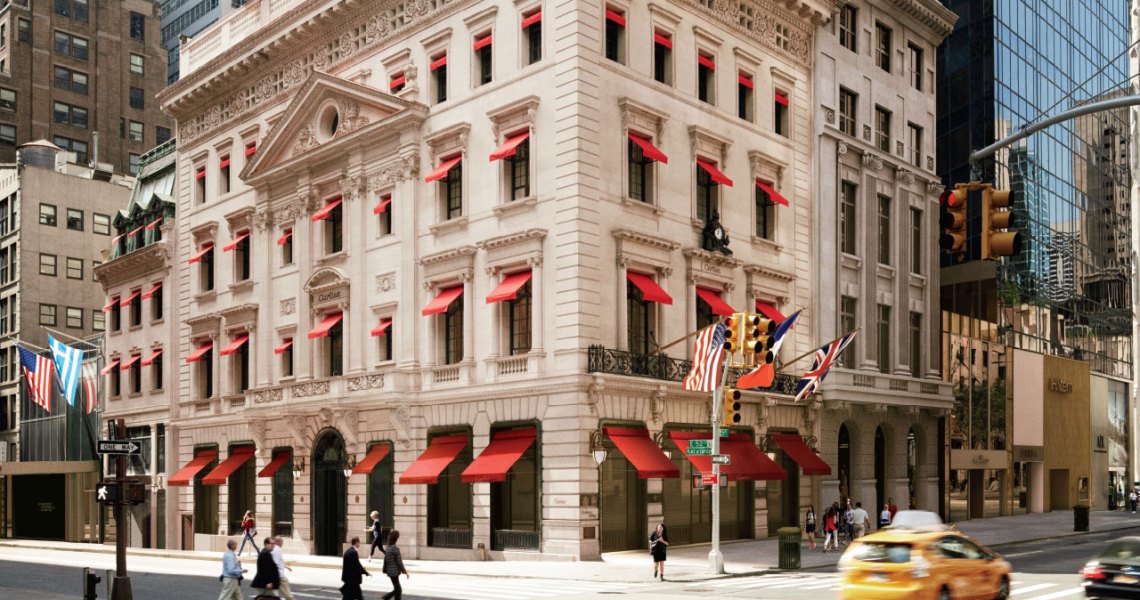This week, an exploration of recently reported declines in U.S. luxury spending. Scroll down to use Glossy+ Comments, giving the Glossy+ community the opportunity to join discussions around industry topics.
On Monday, Swiss luxury goods group Richemont reported its earnings for the first quarter of 2023, revealing a revenue decrease of 2% year-over-year in the U.S. Three days prior, British luxury fashion brand Burberry reported an 8% year-over-year dip in quarterly U.S sales, following its 7% decline in the market in 2022’s fourth quarter. For both companies, the U.S. was the only reported market experiencing a slump in Q1.
Luxury brands have several factors working against them in the U.S. Aspirational luxury shoppers — or those who shop luxury brands occasionally, rather than as a rule — have been plagued by purchasing power-eroding inflation, increasing interest rates and credit card debt. And, after panic buying following supply shortages at the height of the pandemic, many of their retail partners have been right-tracking by destocking, or pulling back on buys.
“In extreme instances, destocking can last as long as six quarters,” said Javier Gonzalez Lastra, CFA, portfolio manager of investment fund Tema Luxury ETF.
For its part, Richemont attributed the drop in U.S. sales to declines in wholesale channels. Richemont owns brands including Chloé, Cartier and Van Cleef & Arpels.
Immediately following Richemont’s earnings announcement, its shares dropped by their most significant percentage in more than a year, at around 10%. Showing lowered investor confidence in the market, LVMH’s and Hermès’s stocks also took a hit, falling around 5% each. It’s worth noting that, also on Monday, China’s reported GDP data showed slowed growth.
“For many luxury companies, China is now more important than the U.S.,” said Gonzalez Lastra.
Ad position: web_incontent_pos1
In terms of consumers’ habits — with the exception of ultra-high-net-worth shoppers — there’s no denying that local discretionary spending on luxury products is down. In its earnings, Burberry reported a softening of the low end of the U.S. luxury market. Meanwhile, Kering’s Jean-Marc Duplaix, who was promoted this week to deputy CEO in charge of operations and finance, reportedly said in February that “aspirational clients …are sort of taking a break.” As such, it’s no surprise that luxury brands are honing in on the top 1%.
At the same time, shoppers have been shifting their spending from high-end products to luxury experiences and services. However, that may be short-lived as inflation is now coming for services.
“The economy is actually good,” said Robin Barrett Wilson, executive fashion advisor at SAP. “People are spending. Planes are full, hotels are full. But consumers aren’t necessarily buying fashion; they’re buying experiences. They’re going out to dinner.” She proposed that brands get in on the trend by bringing experiences into the store.
According to an April 2023, Saks Luxury Pulse survey of luxury shoppers, 53% said that they planned to spend the same or more on luxury goods in the following three months, compared to the three months prior. Meanwhile, 71% planned to spend the same or more on travel.
What’s more, a credit crunch is looming, with banks limiting access to loans and credit cards.
Ad position: web_incontent_pos2
According to Gonzalez Lastra, Richemont is less dependent on aspirational consumers due to its focus on high-cost jewelry and timepieces, which make up the bulk of its sales. However, as its brands keep with the trend of increasing prices, they risk pricing out more consumer segments. For its part, Richemont-owned Cartier raised its prices by mid-single digits in the second quarter.
On LVMH’s first-quarter earnings call in April, finance chief Jean-Jacque Guiony said the group’s Hennessy brand saw a slowdown in U.S. demand when a steep price increase proved “a bit too difficult to absorb by some clients.” He added that the group overall would be taking a cautious approach to price increases in the year ahead.
LVMH’s U.S. sales recently plateaued, reflecting 8% year-over-year growth in both the fourth quarter of 2022 and this year’s first quarter. Guiony said the group could thank its strong Sephora business for providing balance amid the otherwise slowed and “flattish” demand experienced by other LVMH brands — those in the fashion, leather goods and jewelry categories included.
Meanwhile, Kering’s North American sales fell 18% year-over-year in the first quarter.
What happens next is anyone’s guess, as it’s dependent on a variety of “ifs.” For example, the state of U.S. luxury spending could continue to slide if government funds issued during the pandemic, which have lasted longer than expected, finally run out. What’s more, during the back half of the year, banks are set to tighten their lending standards further. And, later, the 2024 election is expected to have a negative effect on sales.
However, if consumer confidence continues on its upward trajectory, while inflation continues to come down and wage growth keeps pace, “we could soon see luxury spending bottom out and start to bounce back,” Gonzalez Lasta said.
Chief financial officer Burkhart Grund said Richemont’s U.S. sales already began picking up, in May.
Overall, Richemont’s first-quarter 2023 revenue was up 19% year-over-year, with the Asian market and jewelry category serving as key drivers. Meanwhile, Burberry’s total revenue was up 17%, boosted by 46% growth in Asia.
In its other markets beyond the U.S., Europe — and its global tourists — saw an 11% revenue increase. Sales in Japan grew 14%, and sales in the Middle East and Africa grew 15%.
Luxury companies including Kering, LVMH and Hermès will report their earnings next week.
Want to discuss this with our editors and members? Join here, or log in here if you're already a member.




